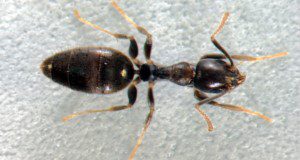Abstract
Insecticides are designed to control insect pests, but they can also be toxic (poisonous) to desirable plants and animals, including humans. Some pesticides are so highly toxic that very small quantities can kill a person, and almost any pesticide can make people ill if they are exposed to a sufficient amount. Because even safe pesticides, such as those intended for household use, can irritate the skin, eyes, nose, or mouth, it is a good idea to understand how pesticides can be toxic so you can follow practices designed to reduce or eliminate your exposure to them. This new 3-page document addresses the acute toxicity of common indoor household insecticide active ingredients registered in Florida and provides a table with mammalian toxicity values for each of these insecticides. Written by Frederick M. Fishel and published by the UF/IFAS Pesticide Information office.
https://edis.ifas.ufl.edu/pi282
This work is licensed under a Creative Commons Attribution-NonCommercial-NoDerivs 4.0 International (CC BY-NC-ND 4.0) license.

